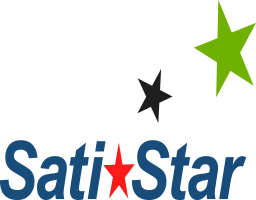Quality Function Deployment (QFD)
Overview
Quality function deployment or “QFD” is a flexible and comprehensive group decision making technique used in product or service development, brand marketing, and product management. QFD can strongly help an organization focus on the critical characteristics of a new or existing product or service from the separate viewpoints of the customer market segments, company, or technology-development needs. The results of the technique yield transparent and visible graphs and matrices that can be reused for future product/service developments.
Scope And Deliverables
As a quality system that implements elements of Systems Thinking with elements of Psychology and Epistemology (knowledge), QFD provides a system of comprehensive development process for:
- Understanding customer needs
- What ‘value’ means to the customer
- Understanding how customers or end users become interested, choose, and are satisfied
- Analyzing how do we know the needs of the customer
- Deciding what features to include
- Determining what level of performance to deliver
Intelligently linking the needs of the customer with design, development, engineering, manufacturing, and service functions
Intelligently linking Design for Six Sigma (DFSS) with the front end Voice of Customer analysis and the entire design system
QFD helps organizations seek out both spoken and unspoken needs, translate these into actions and designs, and focus various business functions toward achieving this common goal, empowering organizations to exceed normal expectations and provide a level of unanticipated excitement that generates value.
The QFD methodology can be used for both tangible products and non-tangible services, including manufactured goods, service industry, software products, IT projects, business process development, government, healthcare, environmental initiatives, and many other applications.
What We Will Do
QFD uses a series of matrices to document information collected and developed and represent the team’s plan for a product. The QFD methodology is based on a systems engineering approach consisting of the following general steps:
- Derive top-level product requirements or technical characteristics from customer needs (Product Planning Matrix).
- Facilitate the development of product concepts to satisfy these requirements.
- Provide guidance on evaluating product concepts to select most optimum (Concept Selection Matrix).
- Partition system concept or architecture into subsystems or assemblies and flow-down higher-level requirements or technical characteristics to these subsystems or assemblies.
- Derive lower-level product requirements (assembly or part characteristics) and specifications from subsystem/assembly requirements (Assembly/Part Deployment Matrix).
- For critical assemblies or parts, flow-down lower-level product requirements (assembly or part characteristics) to process planning.
- Determine manufacturing process steps to meet these assembly or part characteristics.
- Based in these process steps, determine set-up requirements, process controls and quality controls to assure achievement of these critical assembly or part characteristics.
What We Need You To Do
- Assign required resources to the project.
- Ensure availability of required resources.
- Provide a suitable working area for the team’s activities.
- Authorize internal personnel to provide the QFD team with needed information.
- Ensure timely review and approval of the QFD team’s recommendations.
- Provide sufficient resources to implement the team’s approved recommendations.
- Ensure timely delivery of desired results.
WHAT PEOPLE ARE SAYING
SatiStar's Experience Makes The Difference!
